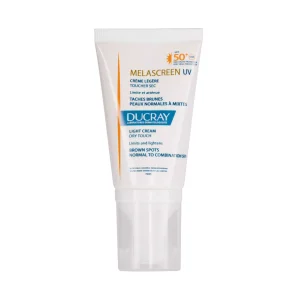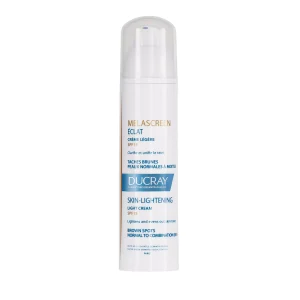
Did you know that the tan you got from staying in the sun too long is not a “healthy glow”? It’s actually your body protecting itself and it’s in fact damaged skin. When you’re young, that tan can be mistaken for a “summer glow,” but as you get older, the slowly forming side effects of that “summer glow” start to show their true colors! In fact, pigmentation is one of the biggest skin problems in the world. That’s why we turned to the dermatologist and cosmetologist Dr. Ehab Abu El Enin to learn all about pigmentation, including the best treatments and products to treat it.
To begin with… What is pigmentation?
Pigmentation means coloring, so skin pigmentation disorders affect the color of your skin. Your skin color comes from a pigment called melanin, which is made by special cells in the skin. Overproduction of melanin can cause clumps to form on the surface of your skin, called pigmentation. Dr. Ehab Abu El Enin states that hyperpigmentation is an increase in the production of melanin pigments, while hypopigmentation is the opposite. “Hyperpigmentation is a common, usually harmless condition in which patches of skin are darker than the surrounding skin”, he explains.
Yes, this phenomenon affects many of us. And yes, it is not limited to your face. It is a common skin problem that affects people of all skin types. It can appear as small patches, might cover larger areas, and in rare cases, the entire body. The risk of pigmentation problems increases with cellular aging and usually affects the areas most exposed to the sun over time.
What causes it?
We all know that the sun plays an important role in the development of pigmentation, but there are many other factors at play.
Depending on your skin type, you may be susceptible to different forms of pigmentation. For example, post-inflammatory pigmentation occurs after skin inflammation and follows an injury or inflammatory disorder (such as eczema, dermatitis, etc.). Although it is a temporary phenomenon, it can be more intense and long-lasting in darker-skinned individuals. For fair-skinned people, freckles, which can be attributed to genetics, may darken and increase in number after spending time in the sun.
But it doesn’t stop there. Factors like the pill, stress, and even pregnancy can add fuel to the fire. Chloasma (melasma) manifests itself as the appearance of dark pigmentation spots, usually on the face, indicating hormonal changes. It is primarily, but not exclusively, associated with pregnancy hormones during pregnancy.
It is important to note that in some cases, hyperpigmentation can be a symptom of an underlying medical condition, such as Addison’s disease.
Now that you know where dark spots come from, read on to find out how to get rid of them.
How to prevent and treat hyperpigmentation?
While the reasons behind the different types of hyperpigmentation may differ, some common practices can help keep it at bay. However, it is important to understand what type of hyperpigmentation you have so that you can use targeted prevention and treatments. Not all common treatments for hyperpigmentation work for every type of hyperpigmentation.
Some types of skin discoloration can be reversed with over-the-counter solutions and self-care. Thus, the best way to fight pigmentation is by adopting proper skin care.
Here’s what to do:
1- Avoid the sun
The first step in treating hyperpigmentation is prevention, and that includes sun protection. There is no doubt that the sun stimulates melanin production. So no treatment will be effective unless the sun is removed from the equation.
You already know what this means: Wear your sunscreen every day, rain or shine. It’s important to use SPF 30 or higher daily, ideally with a physical sunscreen such as titanium dioxide or zinc oxide, reapply every two hours if you’re outside for long periods of time, and wear a hat. Dr. Ehab Abu El Enin also recommends avoiding direct sun exposure.
Another safety tip is to stay out of the sun between 10 am and 3 pm. Even the best sunscreens allow some UVA rays to pass through, making hyperpigmentation worse, so buy some hats.
Below, we’ve selected the most recommended sunscreen on the market.
Ducray Melascreen UV Light Cream SPF50+
2- Don’t scratch your skin
If you have pimples, it’s important not to scratch them. If you have a cut, cover it with a bandage to avoid getting a dark mark or a permanent scar. Also, avoid scratching mosquito bites – this can also cause the skin to darken.
3- Choose products with the right ingredient
Look for a formula that combines a brightening agent, a retinol-based formula, or an exfoliating agent such as glycolic and lactic acids. In addition, you’ll want to use ingredients that can help treat damaged cells in the epidermal layer. These include antioxidants such as vitamin C, which works especially well when used in combination with alpha-hydroxy acids. Dr. Ehab Abu El Enin adds that kojic acid and hydroquinone are also good lightening agents.
If this is not enough, a prescription with a higher dose of active ingredients should be used.
Here we’ve rounded up some of the best pigmentation creams.
Ducray Melascreen Depigmenting Intensive Care: Depigmenting facial care to counter localized brown spots, rich in azelaic acid and glycolic acid.
Ducray Melascreen Eclat Light Cream SPF15: Daily lightening anti-brown spots care for normal to combination skin, rich in vitamin C.
How to quickly lighten hyperpigmentation?
Under the care of a dermatologist, you can try chemical peels or laser treatments to reduce hyperpigmentation. There are also other techniques such as IPL and microdermabrasion that can quickly fade dark spots.
- A chemical peel involves removing the top layers of skin, allowing new healthy skin to form in its place. This can reduce the appearance of dark spots by removing unwanted melanin from the skin.
- Laser pigmentation removal safely and effectively reduces the appearance of pigmentation. The laser targets only the pigmented lesion in the skin that absorbs the light, without damaging the surrounding skin.
- IPL treats brown spots by selectively heating the pigment and then lifting this heated and “damaged” area to the skin’s surface where it is removed by the body’s natural exfoliation process.
- Another pigmentation treatment is regular microdermabrasion, which has proven to be very beneficial in acting on sun-damaged skin and helping to remove unwanted pigment spots from the face.
The final word on hyperpigmentation
There are many options available when trying to reduce hyperpigmentation. Be sure to follow a daily skin care routine and use products that promote cell renewal, hydration, and balance. Don’t give up. With consistency and time, hyperpigmentation can fade. And no matter what, sunscreen is the best place to start to prevent skin discoloration.
This condition can happen to almost anyone, and it will most likely happen at some point in your life. If you already have a severe case, or if you suspect it is hormonal in origin, make an appointment with your dermatologist. Dr. Ehab Abu El Enin warns that hyperpigmentation can also be a sign of potentially fatal diseases such as skin cancer.












